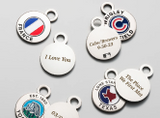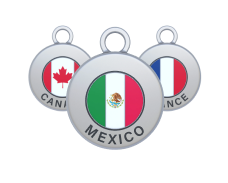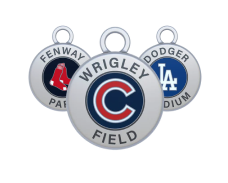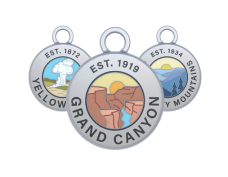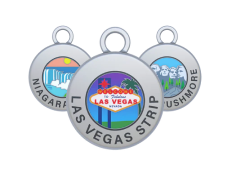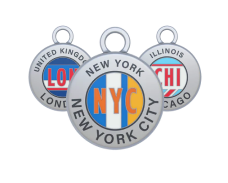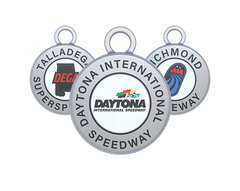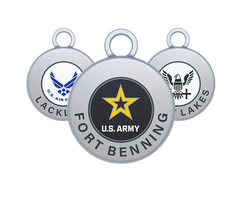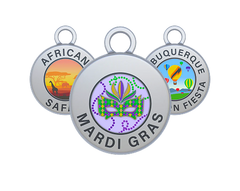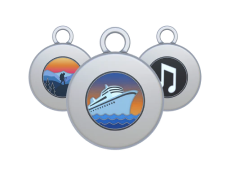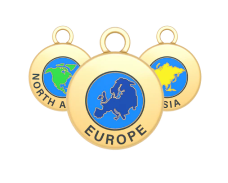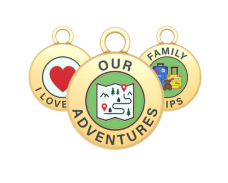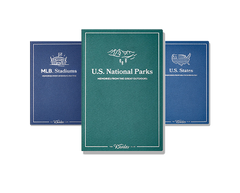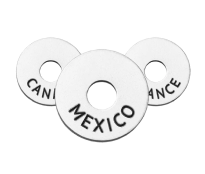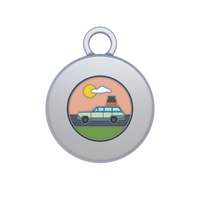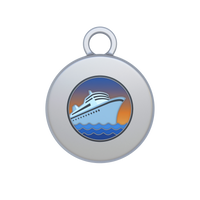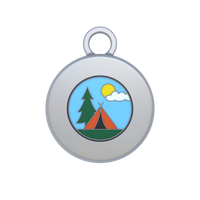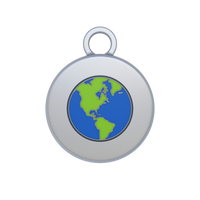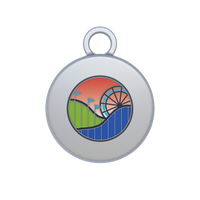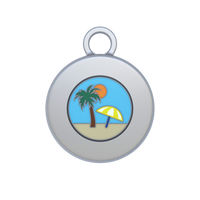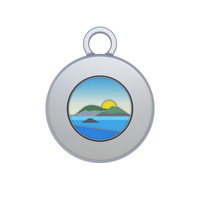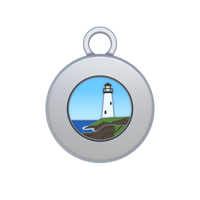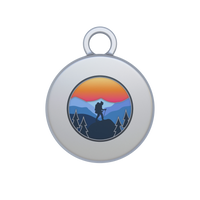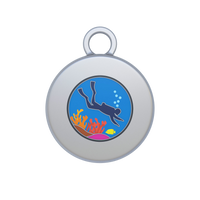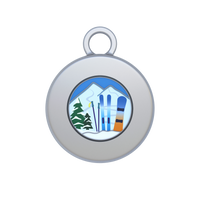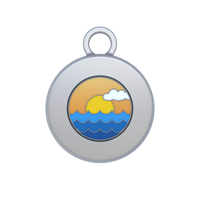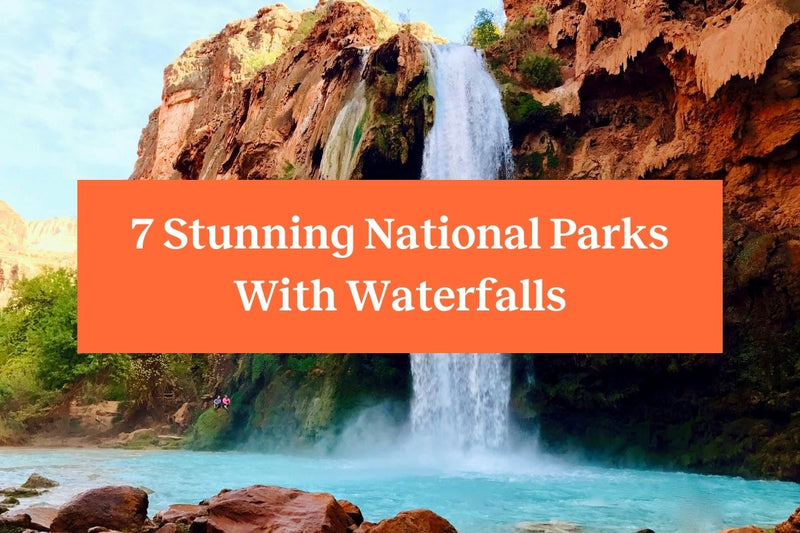
America's national parks are world renowned for their epic hiking, unique rock formations, and amazing stargazing opportunities.
Interestingly — and perhaps surprisingly — not many parks have waterfalls. In sort of an homage to "go big or go home," the national parks with waterfalls, well, they have pretty incredible ones.
We're sharing some of our favorite examples, but first, let's chat about some waterfall basics.
Tips for Visiting Waterfalls in National Parks
- While there are some exceptions, the best time to visit national parks with waterfalls is mid- to late spring through summer. Thanks to snowmelt, falls are generally at peak flow during this time.
- Dress accordingly. A waterfall's spray often causes nearby areas to be soaking wet and slippery, plus it can feel like cold, light rain. It's a good idea to wear sturdy water-safe shoes and a light rain jacket.
- Take extra safety precautions. The areas surrounding waterfalls can be slippery, steep, and overall dangerous. Pay careful attention to your footing, walk slowly, and don't do anything risky for a photo op!
- Along the same lines, practice good waterfall etiquette. Like trail etiquette, this means generally respecting fellow waterfall admirers. Give others plenty of space and time to take photos, and don't hog the views during your turn.
Without further ado, let's dive into some of the most impressive national parks with waterfalls!
7 National Parks With Waterfalls
1. Cuyahoga Valley, Ohio
Cuyahoga Valley frequently tops lists of the most underrated national parks, but don't let that fool you — there's plenty to see and do.
For starters, there's Brandywine Falls. At 65 feet tall, Brandywine is far from the tallest national park waterfall, but it's incredibly scenic (especially in the fall!). It's also extremely accessible, which is somewhat unique.
The easy 1.5-mile Brandywine Gorge Trail gets you up close and personal, but you can also skip the hike and see the falls from the boardwalk platform.
Brandywine isn't the only waterfall in Cuyahoga Valley National Park. In fact, there are over 100 named falls! Highlights include Bridal Veil Falls and Blue Hen Veils.
While you're visiting, don't miss riding on the Cuyahoga Valley Scenic Railroad!

2. Grand Canyon, Arizona
We know, the Grand Canyon isn't exactly what comes to mind when you think of national parks with waterfalls.
Desert landscapes and extreme temperatures, sure. But waterfalls? No. Yet, there are several. Perhaps this shouldn't surprise us — after all, the Grand Canyon is one of Seven Natural Wonders of the World.
The most iconic Grand Canyon waterfall is Havasu, with its 100-foot-tall cascade and milky blue waters. There are also several others, and they all share something in common: they're difficult to reach.
For example, Havasu Falls requires obtaining a permit and embarking on a strenuous 10-mile hike...each direction. Oh and those permits? They're extremely difficult to get. You have to apply about 18 months in advance and the entire season sells out within minutes!
Visiting the park's other waterfalls, including Elves Chasm and Deer Creek Falls, requires rafting down the Colorado and intense hiking. For once-in-a-lifetime views like this, though, it's worth it!

3. Great Smoky Mountains, Tennessee
If you're a waterfall aficionado, it's hard to top Great Smoky Mountains National Park. The area receives a whopping 85" of rain each year on average!
NPS explains that some higher elevations in the park, such as Clingmans Dome and Mt. Le Conte, actually get over eight feet of rain annually!
Thanks to eastern Tennessee's mild and almost subtropical climate, many of the park's waterfalls flow year-round. Even better, most are also easily accessible, making it a great choice for a weekend getaway in a cozy Pigeon Forge cabin.
Highlights include Laurel Falls, Rainbow Falls, and Abrams Falls. Laurel and Rainbow are some of the most popular destinations in the park, while Abrams is tucked into a far corner in Cades Cove.
There are also several waterfalls in the Smokies that you can drive right up to, including Place of a Thousand Drips and Meigs Falls.

4. Haleakala, Maui, Hawaii
There are approximately one million (and one!) reasons to visit Maui. One of them just happens to be that it has one of the national parks with waterfalls, Haleakala.
One of two Hawaii national parks, Haleakala is incredibly unique and diverse. It's split into two areas, the Kīpahulu District and the Summit District. The Summit District has an otherworldly, almost moon-like terrain and is also home to 10,023-foot Mount Haleakalā.
Over in the Kīpahulu District, you'll find the classic Hawaii landscape: lush, green, and wet — the perfect recipe for waterfalls.
400-foot-tall Waimoku Falls (accessed via the spectacular Pipiwai Trail) is unquestionably the star waterfall of Haleakala. However, 200-foot-tall Makahiku Falls is impressive in its own right.

5. Mount Rainier, Washington
With well over 125" of annual rainfall, 25 active glaciers, and countless rivers and streams, it makes perfect sense that Mount Rainier is one of the best examples of national parks with waterfalls.
The park has 150 named falls, but hundreds of other nameless smaller waterfalls. Of Mount Rainier's major falls, some of the most popular include Christine Falls, Spray Falls, Comet Falls, and Narada Falls.
Christine and Narada Falls are both viewable year-round, and can even be seen from a vehicle without hiking!
If you're visiting Mount Rainier, keep in mind that you can also easily hit Olympic, North Cascades, and Crater Lake National Parks on a Pacific Northwest roadtrip!

6. Yellowstone, Wyoming, Montana, and Idaho
It can be overwhelming deciding what to see first in Yellowstone's massive 2.2 million acres.
Side note: that's not even close to the biggest national park in the Lower 48. Death Valley clocks in at 3.4 million. If we factor in Alaska's national parks, that looks like a community park. Wrangell-St. Elias is a stunning 13.2 million acres!
Back to Yellowstone...a great place to start in the park is Upper or Lower Yellowstone Falls. Situated in what's appropriately known as the "Grand Canyon of Yellowstone," these falls are absolutely stunning. As a bonus, they're right along Grand Loop Road.
If you'd prefer a waterfall with fewer tourists, consider hiking to Fairy Falls, Wraith Falls, or Cascade Creek Falls.

7. Yosemite, California
Truthfully, we wrote this list in alphabetical order. It's just a happy coincidence that we sort of saved the best for last.
Yosemite is the undisputed king of national parks with waterfalls, with a winning combo of high elevation in the Sierras and plenty of annual precipitation.
The park's namesake attraction, Yosemite Falls, is far and away its most popular destination. At 2,425 feet, Yosemite Falls is the tallest waterfall in California and among the tallest in the world.
In the early summer months, you can see the falls from just about anywhere in Yosemite Valley. Adventurous souls can also hike to the very top, but be warned — it's a strenuous, steep 7-plus mile trail.

So who's "falling" even more in love with our national parks? See what we did there?
On a more serious note, it's important (not to mention fun!) to document and commemorate your adventures. U.S. National Park Tokens from The Wander Club are the perfect way to do exactly that! They're high-quality, stylish, and portable, so you'll always have a great story on hand — literally!
Do you have a favorite waterfall in a national park? Let us know which ones we need to add to our personal bucket lists!
